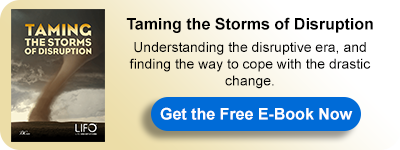Understanding Different Orientations Towards Change
Natalie did not see any reason for the current changes within the system. Her manager Tucker was very enthusiastic about it. He said that this is the latest customer relationship management technology. It will help them respond to customers based on their history and preferences, providing them with the best timely service. Natalie repeated the last sentence in her head. No matter how optimistic she tried to be about this new system, she just couldn’t. Samantha, on the other side, was neutral about it. Samantha, Natalie’s colleague, would probably observe how things would go, then decide how she will maximize it into an opportunity that serves her job and helps her achieve her goals as best as she can. She stood there listening to Natalie as she poured in her worries.
She seemed anxious. Samantha tried to calm her down. However, this was not easy. Natalie was not much into change. She needed to take her time to adapt. It did not occur to enthusiastic Tucker that Natalie needed to see statistics, logic, and information behind the new system to get Natalie on board and help her overcome the worries that pushed her into freeze mode. Some data of before and after would help her a lot. Samantha, on the other hand, was given the authority she needed. After all, Samantha was about determination. She would push to reach her goals.
Yet, Samantha required power and a good challenge to thrive when it came to change. Voila! There it was. Bob, however, was trying to cope in his own way. At the very beginning, he stood there watching. For Bob to accept change, he needs support. However, he did not find much of that. Tucker, his manager, was pretty busy with implementation, Natalie, his long-time colleague, was consumed in her own worries. At the same time, Samantha was lost in her world of opportunities trying to make the best out of the new system. Bob stood there at the beginning. Not getting much support caused him more frustration.
Yet, being an optimistic spirit, Bob started to seek the resources and help he needed. He began to search and ask questions, and he held his hopes up high as he always did whenever he was challenged with a new situation. Tucker, their manager, could see the bright side of it. He was very excited and enthusiastic about the new system. However, he needed to make sure his team members were getting their needs as well to get them fully on board.
How can Tucker get his team fully on board?
What Tucker needs to do is to recognize that his three team members are different. Not only from each other but also from himself! Yes! Each of them comes with a different life orientation through which they see the world. Hence, each one of them deals with change in a completely different way.
Tucker: Adapting-Dealing
If a team member has the same orientation as Tucker: Adapting Dealing, therefore, their first reactions to change is probably enthusiastic, tends to see the bright side, and will likely have a go at it. If you want things to go smoother for an Adapting Dealing, then you need to:
- Avoid Unfriendly reactions
- Excessive structure
- Dominating routines
- Loss of status
Natalie: Conserving-Holding
If a team member resembles Natalie, they are the Conserving Holding style. They are cautious to changes, will suspend judgment. They must also understand the purpose and see the justifications and have the “what ifs” answered. If you want to run change smoothly, then you need to avoid:
- High emotionality
- Changing rules
- Forcing decisions
- No organization
Samantha: Controlling-Taking
A team member who resembles Samatha is a Controlling Taking style. Their initial reactions towards change are Favourable. However, they must see the payoff when participating or initiating change. Hence it would be best to tie the change with their own interest; otherwise, they will resist it. Here’s what you need to avoid:
- Lack of authority
- Countermanding
- No challenges
- Unreliable people
- No resources
Bob: Supporting-Giving
Do you have a Bob on your team? A Bob’s initial reaction to change is hesitant. He must see the purpose and benefit. Yet, he will go along if advocated by someone trusted. However, you need to avoid:
- Excessive requests
- Personal criticism
- Lack of support
- Injustices
- No appreciation
The above analysis and much more are available when you take the Life Orientation (LIFO®) Change Styles survey. The survey allows participants to know their own orientation to change. In addition, it shows necessary tools to persuade each orientation, and what you need to provide them with. Moreover, how each orientation copes and much more. We highly recommend you and your team take the survey as it will help you plan changes with your team on a solid basis of understanding, and it will help you give each team member their needs. Moreover, it will help them understand themselves and their colleagues. Thus, it leads to fostering a team member, in addition to change that is built on solid grounds.
For more about this topic, download our latest book "Taming The Storms Of Disruption" for FREE:
